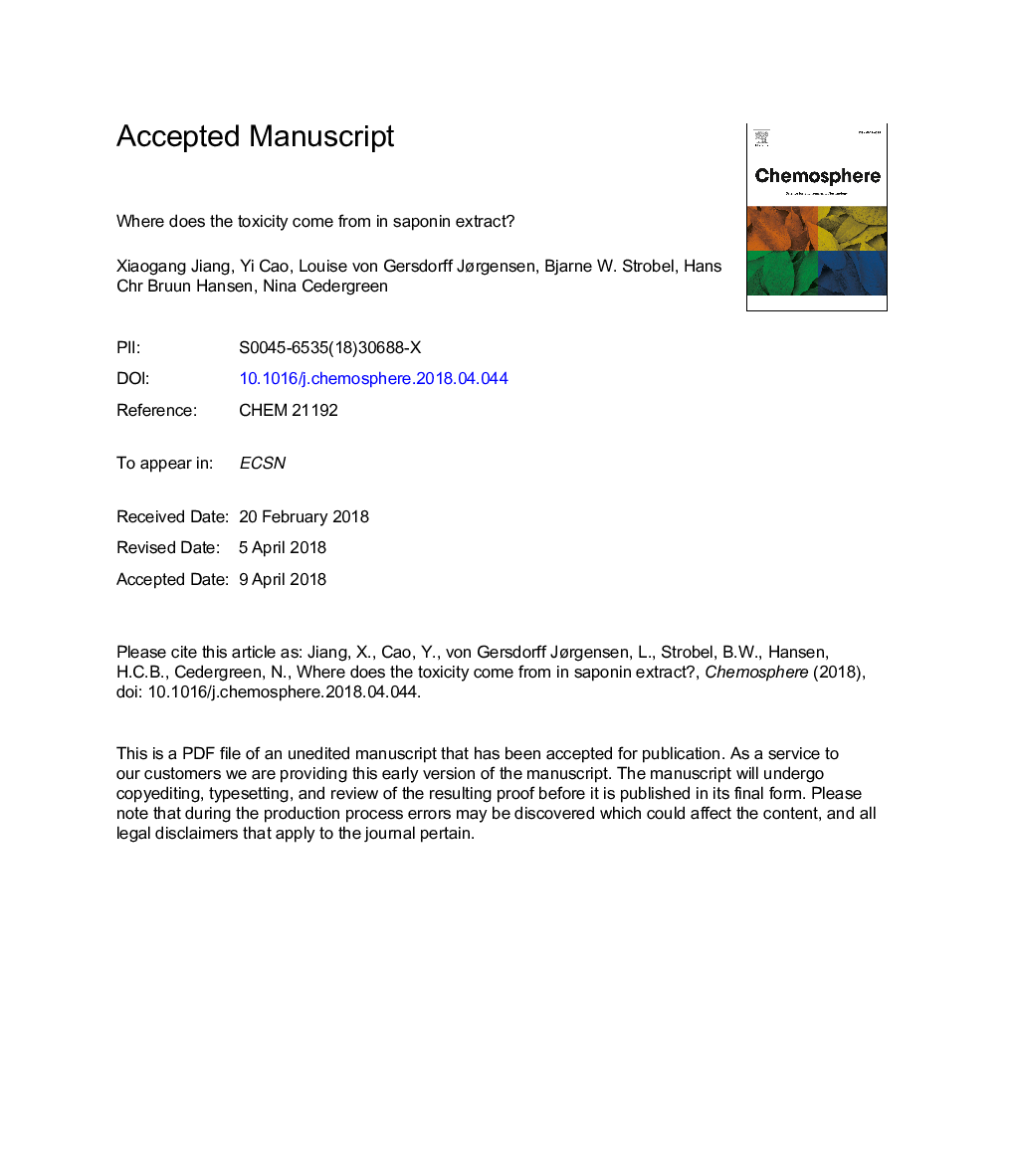| کد مقاله | کد نشریه | سال انتشار | مقاله انگلیسی | نسخه تمام متن |
|---|---|---|---|---|
| 8851178 | 1618767 | 2018 | 30 صفحه PDF | دانلود رایگان |
عنوان انگلیسی مقاله ISI
Where does the toxicity come from in saponin extract?
ترجمه فارسی عنوان
از کجا سمیت در عصاره ساپونین وجود دارد؟
دانلود مقاله + سفارش ترجمه
دانلود مقاله ISI انگلیسی
رایگان برای ایرانیان
کلمات کلیدی
موضوعات مرتبط
علوم زیستی و بیوفناوری
علوم محیط زیست
شیمی زیست محیطی
چکیده انگلیسی
Saponin-rich plant extracts contain bioactive natural compounds and have many applications, e.g. as biopesticides and biosurfactants. The composition of saponin-rich plant extracts is very diverse, making environmental monitoring difficult. In this study various ecotoxicity data as well as exposure data have been collected to explore which compounds in the plant extract are relevant as plant protection agents and furthermore to clarify which compounds may cause undesired side-effects due to their toxicity. Hence, we quantified the toxicity of different fractions (saponins/non-saponins) in the plant extracts on the aquatic crustacean Daphnia magna and zebrafish (Danio rerio) embryos. In addition, we tested the toxicity changes during saponin degradation as well. The results confirm that saponins are responsible for the majority of toxicity (85.1-93.6%) of Quillaja saponaria extract. We, therefore, suggest saponins to be the main target of saponin-rich plant extracts, for instance in the saponin-based biopesticide regulation. Furthermore, we suggest that an abundant saponin fraction, QS-18 from Q. saponaria, can be a key monitoring target to represent the environmental concentration of the saponins, as it contributes with 26% and 61% of the joint toxicity to D. magna and D. rerio, respectively out of the total saponins. The degradation products of saponins are 3-7 times less toxic than the parent compound; therefore the focus should be mainly on the parent compounds.
ناشر
Database: Elsevier - ScienceDirect (ساینس دایرکت)
Journal: Chemosphere - Volume 204, August 2018, Pages 243-250
Journal: Chemosphere - Volume 204, August 2018, Pages 243-250
نویسندگان
Xiaogang Jiang, Yi Cao, Louise von Gersdorff Jørgensen, Bjarne W. Strobel, Hans Chr Bruun Hansen, Nina Cedergreen,
